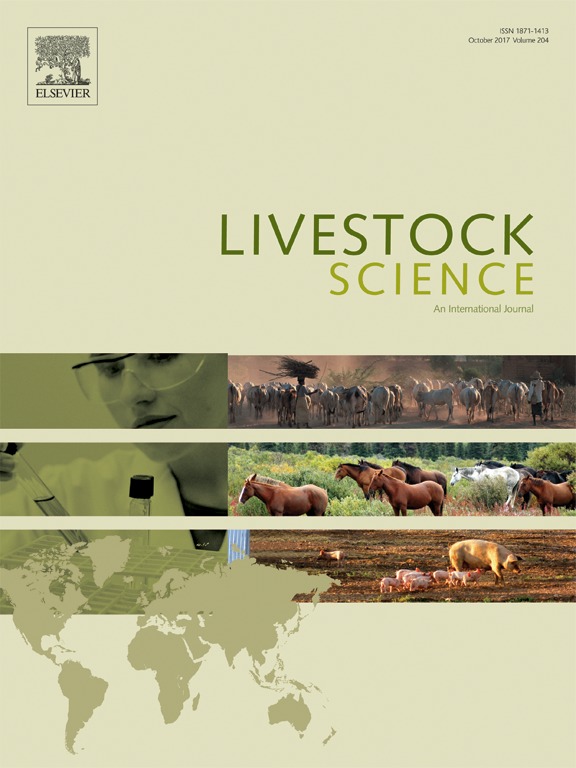Ver ítem
- xmlui.general.dspace_homeCentros Regionales y EEAsCentro Regional Buenos Aires SurEEA BalcarceArtículos científicosxmlui.ArtifactBrowser.ItemViewer.trail
- Inicio
- Centros Regionales y EEAs
- Centro Regional Buenos Aires Sur
- EEA Balcarce
- Artículos científicos
- Ver ítem
Changes in the vaginal microbiota in ewes after insertion of intravaginal sponges at different stages of the oestrous cycle
Resumen
The aims of this study were to determine if the ewe’ vaginal bacterial load differs according to the stage of the
oestrous cycle; and thus, if the stage of the oestrous cycle when intravaginal sponges (IS) used for oestrous
synchronisation are inserted influences the vaginal bacterial biota present at sponge withdrawal. During the
breeding season, 45 Texel ewes were detected in oestrus and randomly allocated to one of three treatments of 15
ewes each
[ver mas...]
The aims of this study were to determine if the ewe’ vaginal bacterial load differs according to the stage of the
oestrous cycle; and thus, if the stage of the oestrous cycle when intravaginal sponges (IS) used for oestrous
synchronisation are inserted influences the vaginal bacterial biota present at sponge withdrawal. During the
breeding season, 45 Texel ewes were detected in oestrus and randomly allocated to one of three treatments of 15
ewes each according to the stage of the oestrous cycle when the IS were inserted. Intravaginal sponges were
inserted: the day of oestrus (GOes), or 2 (GMet) or 8 (GDie) days after oestrus. Samples for bacterial analysis
were collected the day of IS insertion (Day 0), at sponge withdrawal (Day 12), 24 h (Day 13) and 48 h (Day 14)
after sponge withdrawal. Vaginal bacteria amount increased at sponge withdrawal in all treatment (p<0.0001).
The number of different types of colonies was greater in GMet group than in GDie at sponge insertion (p<0.05),
without difference with GOes. At sponge insertion, the presence of Staphylococcus spp. was greater in GMet than
in GOe and GDi (p<0.05); the presence of Trueperella pyogenes and Haemophilus somni was greater after sponge
withdrawal than before sponge insertion (p<0.001), but without difference between days 12, 13 and 14.
Overall, we concluded that in ewes the normal vaginal bacterial load differs according to the stage of the
oestrous cycle. The continuous presence of the IS homogenised the vaginal bacterial microbiota at withdrawal,
with only slight and transient differences observed on day 13.
[Cerrar]

Autor
Manes, Jorgelina;
Fiorentino, María Andrea;
San Martino, Silvina;
Ungerfeld, Rodolfo;
Fuente
Livestock science 208 : 55–59. (2018)
Fecha
2018
ISSN
1871-1413
Formato
pdf
Tipo de documento
artículo
Palabras Claves
Derechos de acceso
Restringido
 Excepto donde se diga explicitamente, este item se publica bajo la siguiente descripción: Creative Commons Attribution-NonCommercial-ShareAlike 2.5 Unported (CC BY-NC-SA 2.5)
Excepto donde se diga explicitamente, este item se publica bajo la siguiente descripción: Creative Commons Attribution-NonCommercial-ShareAlike 2.5 Unported (CC BY-NC-SA 2.5)

